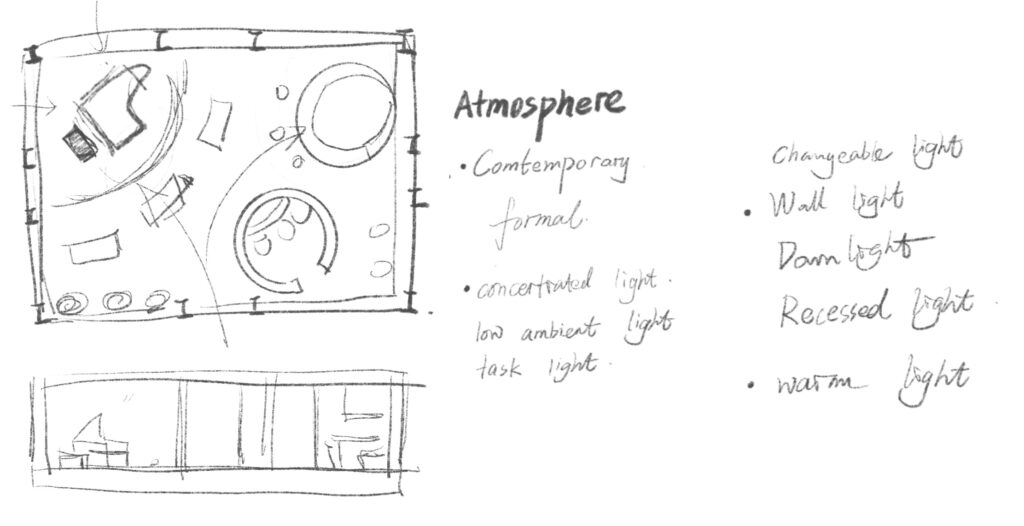Notes_week3
This week’s course will focus on the types and basics of Artificial light. I am very interested in the case introduced by the teacher at the beginning.
The chandelier in Cowane’s Hospital Stirling is very interesting. The lamps run through the interior in a parabolic path parallel to the horizontal plane. Can see from the photograph that offers, these lamps and lanterns have the basic function that provides illuminant indoors not only, have the action that guides to the vision likewise. Breaking the depth of a single perspective line adds fluidity and curves from the horizontal direction to the entire space. And the shape of the lamps is also a very interesting trihedral structure. Seen from a distance, it looks like a lot of birds flying into the distance, which has a story.
And then there’s Richard Kelly, the first one to think about the theory of lighting design. His project of Seagram Building (1954-58) made me realize that light creates more than lighting some dark area, but shapes something expressive. Furthermore, The three key aspects of Kelly also give me a way to know the light on a more theoretical level.
Group working _week3
We drew the Piano Recital Space, and we were thinking about some traditional lighting Settings in the performance area. We didn’t give a detailed answer on whether the overall atmosphere was relaxed or formal because of time. But I think it’s an important part. The bright interior allows people to relax and communicate briskly. during the day, such a space relies more on the display of natural light. If it is a very formal concert, it needs to be dark so that the audience can focus all their attention on the performer. In this case, it needs spotlights and auxiliary light belts to protect the audience.


Just a different choice of the atmosphere will lead to the complete opposite of the design results. Therefore, before starting, we often need to determine what the atmosphere of the space is, which can help us to think more directly about the lighting Settings.


Leave a Reply